By: Travis Allen
Back when Zendikar came out, I attended the release as a casual player at his first store event. I was mostly hoping to open Lotus Cobra, because what could be more fun than generating boatloads of mana? Nothing. (In fact, to this day, I hold the same belief.) At one point I asked some players if they thought Cobra was the now the best green two-drop, taking the throne from Tarmogoyf. I had a lot to learn. At that prerelease, I also traded the fetch lands I opened for boosters. I didn’t need fetches; what I needed was more packs. Just think what could be in the packs! Why, maybe even fetches!
It was a terrible decision. Trading for packs was, and is, a great way to rapidly disintegrate your collection’s value. You’ll trade real cards for packs, open the packs, end up with $4 in rares, and be down $10 in value. Repeat this cycle a few times and it will be as if you ground your dollars into dust and blew them into the wind. Not only is it a bad idea, it’s one which countless new players engage in. In an effort to provide some of our newer friends with known financial pitfalls, today will be a non-exhaustive list of things you should not be doing when trying to keep your Magic collection’s value intact. You can find my previous article intended for novices on the topic of trading over here. If you find this article helpful, you would be wise to take a look at the previous installment as well.
Don’t Open Packs
A quick rehash of our introduction: don’t open or attempt to acquire packs. I’m not going to get into the math, but the long and short of it is that over time you will lose money if you open boosters. This includes trading your cards for boosters, which is a similarly poor choice. Here’s an excellent example:
Back when Dragon’s Maze released, I watched a casual player come into the store and buy a single pack of DGM. He opened it there at the counter and pulled out a fresh new Voice of Resurgence, whose price tag at the time was somewhere north of $25. What more could you ask for? You crack a single pack and open the best card in the set. The thirst was strong though, and he wanted more. He immediately traded the Voice into the store and used the credit to buy several more packs. After opening all of those, he traded the rares in for more store credit (less than he spent on the packs, of course) and bought more packs. This cycle repeated a few times, until eventually he had a pile of commons and uncommons and maybe a bulk rare or two the store didn’t want. Had he walked out after the first pack, he would have gotten a $25 card from a $3 purchase. Instead, he converted that $25 Voice into a pile of worthless pack filler. Regardless of whether or not he was pleased with the end result, those of us playing at home know the score: he got lucky out of the gate, and then pissed his winnings away over the next twenty minutes.
Never trade for packs. In fact, don’t even open them. Does your LGS (local game store) give out pity packs? Did you win some packs for 4-0ing FNM or a prerelease? Don’t open them! They’re worth far more sealed as a sort of unscratched lottery ticket. Rather than crack them yourself, either use them to draft, or if that’s not feasible, trade them away for real cards. Four packs should be able to buy you a Flooded Strand from someone who knows less than you do. Imagine you had opened those four packs instead, and you found three bulk rares and a Strand. You’d consider that a win, right? So why gamble against the odds when you can just trade for the useful cards outright?
Stop Foiling Standard Cards
I enjoy cool foils. They’re flashy, they’re special, they’re ostentatious, and they tell other people that you’re cool (well that’s the idea, anyways). What they also are is a luxury product. In a hobby that is entirely a luxury activity, these are the most luxurious of the luxury items. They are the $10,000 gold iWatch in a sea of $400 iWatches. Both are a luxury good, but one of them is way more excessive than the other.
When you have a large collection and you’re heavily invested in the game, foils are fine. They feel much more special, and it’s a pleasurable experience hunting down key foils for your EDH or Modern deck. As a newer player, though, they represent deep cash sinks that will tie up large portions of your collection’s value for no real reason. What do I mean by that?
These are the rare creatures (and planeswalker) from Chris VanMeter’s Syracuse-winning RG deck. Notice that if you foil out just the main deck rare creatures, it costs you an extra $197—nearly doubling the cost of the deck! Foils creatures don’t have extra stats or cost one less mana. Non-foil Thunderbreaks kill just as fast as foil ones do. Why sink an extra $200 into your deck that you don’t need to? This isn’t a timeless EDH deck that you’ll play for months and years to come. It’s a Standard deck that will be hanging around for a few months at best.
Foiling our your Standard cards is a complete waste of money. It doubles the cost of the cards, making it harder to put together a deck, it makes it more expensive to keep up with weekly metagame changes, the cards fluctuate in value rapidly as they are highly dependent on being good from week to week, and you stand to lose huge value when single-format staples rotate and hemorrhage value, as Stormbreath Dragon or Thunderbreak Regent will.
Obtaining foils once you’ve established a solid collection and are ready to invest some money in eternal decks is fine. Buying into foils for Standard decks, especially when you’re new, is a fool’s game.
Keeping Multiple Decks Isn’t Sustainable
When reading articles by Chapin, you’ll notice he talks about a gauntlet. The idea is that you have available to you the top three to six decks of a format so that you can test your deck against what you expect the room to look like. This is a great tool for those testing for the Pro Tour. For those grinding LGS events to win store credit, it is a less great idea.
Maintaining a deck costs at least a few hundred dollars in cards, especially if you’re trying to keep it updated from week to week. When you start trying to do this for multiple decks, you’re rapidly going to deplete your resources, and instead of having one complete and battle-ready deck, you’re going to have three knives to choose from when everyone else is showing up with a gun. Don’t handicap your weapon of choice by trying to maintain too many decks at once. Instead, pick a single deck and focus on that. Acquire the cards for that deck, not other decks. Yes, that guy may have an Ojutai, but that doesn’t mean you should trade your three Siege Rhinos for it because you “may want to play UW at some point.” Hold your Siege Rhinos so that when someone has Thunderbreak Regents, a card you actually need, you have something to trade for them. Focusing your efforts, and your trade fodder, on a single target means that you’ll be able to keep a complete, competitive deck together. That complete, competitive deck is then capable of winning you events, and hopefully will start growing your collection.
I’ve watched people try to build the top three Modern decks and it’s painful to see them flounder. They’ve got most of Abzan, but they’re missing most of the shock lands and a few Tasigurs. They’ve acquired most of Affinity as well, although they don’t have any Glimmervoids or Etched Champions yet. There’s also a UR Twin deck, but they’re missing the Blood Moons for the sideboard that are integral to the deck’s strategy in multiple top-tier matchups. The end result is that none of these decks is capable of performing well. Meanwhile, they’ve got the value they need to finish any one of the lists, but it’s tied up in cards for another incomplete deck. A half-built Affinity deck is essentially wasted money. What is that $400 worth of artifacts doing for you if it isn’t playable? Wouldn’t it be better off as the last several cards you need for Abzan so that you can actually play it?
You will meet a lot of people with a lot of cards. There’s always a player at my LGS that’s amazed how varied and deep my collection is. I can field most any Modern deck, and plenty of Legacy ones. Do you know how long I’ve been playing though? Over twenty years at this point. You don’t end up with this many cards within a year of playing. Focus on one deck for Standard, build that deck well, and let your collection grow as it will.
Don’t Invest Too Deeply
You’ve been playing for nine months and you’re enjoying the game. While watching a streamer jam Legacy queues online, you decide that the latest Stoneblade list looks awesome. You decide to start working towards the deck so that you can have a Legacy list together and begin playing in local events. Two weeks later at FNM, someone has a Tundra in her binder. It takes thirty minutes of negotiations and several playsets of Standard staples, but you’re successful. You picked up a Tundra. Awesome! Now only…74 more cards to go. Oh. Nice $200 bookmark you’ve got there.
Modern and Legacy are great formats, and I enjoy playing both. There’s lots of articles about how to get into Legacy, and in fact a series even runs here on MTGPrice. It feels like every other week there’s an article about budget Legacy decks, or how Legacy is cheaper than Standard, or how to trade into Legacy staples. These are all fair pieces, but one thing they tend to gloss over is the opportunity cost and loss of liquidity that goes with trading into Legacy.
After you trade for your very first Tundra, what next? You had $500 worth of cards in your trade binder and you just used half of it to acquire a card for which you will have no use for another nine months. Even if it was a fair deal—heck, even if it was a great deal—that still represents a major loss of liquidity. All those Siege Rhinos and fetches and Ojutais that you could have used to keep up with Standard and make trades with to grind your collection are instead gone, replaced by a single monolithic Tundra that you can do exactly nothing with. You now have way fewer cards to trade with, and you’re still a million miles from actually playing that Legacy deck. How are you going to acquire the other $1,500 in cards you need if you’ve only got $200 left in your binder to work with?
I’m not anti-Legacy or anti-Vintage. I think they’re great formats that offer play experiences unlike what Standard or Modern have to offer. However, they represent money pits that make it very difficult to drag value back out of later on. Instead of sinking half of your collection’s value into a handful of Legacy staples that you are unable to use, keep your binder fresh and agile. Use that binder to grow your collection’s value and then, once you’ve got a healthy stash built up, convert it into a Legacy deck in one fell swoop.
MTGPrice will be offering coverage from the floor of GP Vegas! We’re asking you, dear reader: what do you want to see? What type of information do you want from the biggest Grand Prix of all time? Tell us! Leave it in the comments or message me on Twitter at @wizardbumpin.
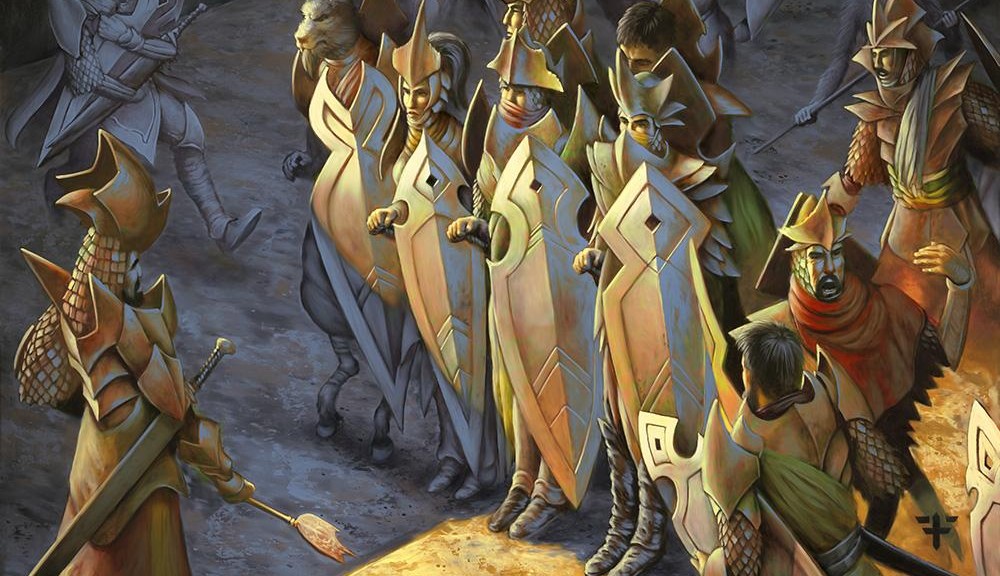
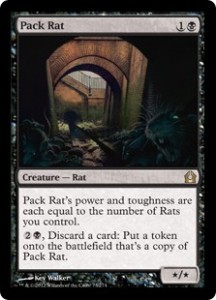
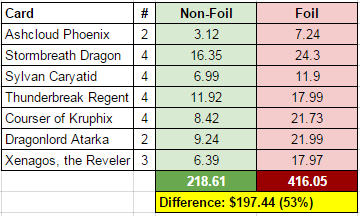
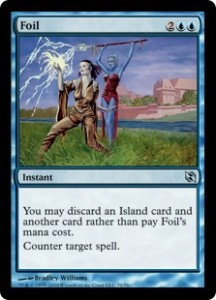
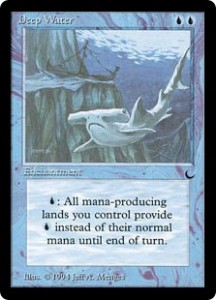
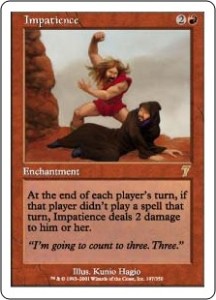
Heavy dose of knowledge. I have played this game a long time and one thing I learned many years ago is, never buy packs ! It’s cheaper in the long run to buy singles. I do buy sealed products Sometimes.
Great article indeed!
My collection is quite extensive as well, and like you, I can almost do all the decks from Legacy up to Standard.
One thing I did was to produce alot of proxies for testing almost all the decks. As an exemple, let say that you built a Legacy infect deck using your 4 Tropical Island but you want to test it against Shardless BUG,… the cheapest way to be able to built all the decks you want to test without all the trouble to undo them to rebuilt another one.
I have the luxury of being SUPER lucky and a couple of my friends are as well. We crack packs a lot and get super great things like a regular fetch land and a foil in the same pack. We have a pretty good system that I can discuss in private but basically you get a few feeler packs to see what’s in there and if the box is hot them you can really reap the rewards. That said, if you’re pretty lucky you can make some extra cash doing the crack packing work that others aren’t able to do. I recommend it if that method works for you personally.
It’s worth noting that unless you’re mapping boxes, there is no “system” that will statistically hold up over time. You can’t beat the house if the sample size is large enough. Things regress to the mean given enough time.
Boxes are unmappable since WOTC changed the algorithm and now even less so since the cards are machine readable.
Simply not true, Phillip. Mapping has simply become less public, where only a few larger shops/organizations order enough boxes to decode the maps. Cards being machine readable actually speeds up this process. So long as the cards are entirely printed, cut, and packaged into boosters by machine with no true randomization before being packed into boxes, they’ll be mappable.
I’m chiming in to agree with Corbin here. Chances are that you haven’t run as hot as you think you have, and you’re just remembering the hits while forgetting the losses. And even if you have beaten the average up to this point, there’s no guarantee that you’ll continue with it. The only way to guarantee that you come out ahead when opening packs is to map boxes, which leaves you with a pile of packs for which there is no real ethical option other than simply opening them, which would of course destroy your profit.
I’m aware of the “feeling for foils” trick if that’s what you’re referring to. I’ve never seen anyone do it consistently. It’s possible that would be effective over the long term if you could get to 95%+ accuracy with it.
I disagree about the liquidity argument for a single Tundra over a slew of smaller staples. One sale vs. many dozens of sales.
Agreed. I trade out duals with a 25% haircut attached to the cards I’m trading for. They never fail to trade and I inevitably always get them back.
The funny thing is, the second half of my article this week is about how much fun it is to open packs. 😛
I have a slight argument with new players not opening packs. I work in a card store that’s been open a year and we have alot of newer players. They are the keystone to a brick and mortar store, they do what we call “riding the pack train” where they do exactly what you’ve described with the voice. However they’re young and enthusiastic about magic and use all those commons and uncommons to build multiple decks. Most of them are “bad” decks, but that’s ok. From there they play them and usually realize which is the best and will focus on the better deck.
Meanwhile the store which bought the rares (60% credit at our store) will sell those singles and continue to survive.
I watched a young man pull some foil mythic, traded it for packs and rode that “train” to an entire box of commons, uncommons, and bulk rares.But he was so happy that it didn’t matter that he had lost the best stuff, he added like 400+cards to his collection. It was an amazing experience for him and me.
So while your article is indeed correct for those that read it (those interested in finance), don’t discourage those new players who A: should build up a collection, not just a trade binder. B: Are literally the most important factor to keeping LGS alive, cause if people just buy the singles they want online and prereleases are every three months there isn’t much keeping the store alive because drafts barely turn a profit and fmn is a blackhole if no one is buying singles. Cause that’s where the singles come from, not the store opening packs because that’s a huge money lost, it’s players opening them and trading them in to be sold.
Travis, gotta say this article kinda has a sour grapes feel to it like the head coach of Wisconsin after the NCAA title game. I’m not sure what the exact point of your article is because if it’s to play magic as cheaply as possible then I have a title of a new article for you: “Save your money and don’t play Magic the Gathering!”
I am with you on opening packs and totally agree to save your money for the cards you need instead of crack a pack and pray. However, in your example above about the person who opened up the Voice of Resurgence and kept trading in rares for packs they technically only spent $3 to open a bunch of packs and maybe that was more enjoyable than the $20 profit they could potentially have made, and they probably were not going to make $20 profit.
Your last point about trading for the Tundra is what really got my blood boiling however. “Nice $200 bookmark!!!” Really Travis!?!? If your point is not to spend $500 on Standard cards and then trade away all that “value” for a $200 legacy card you are correct. But if you trade playsets of Thunderbreaks, Stormbreaths, Xenagoses, Coursers etc that equal about $250 value and trade for a $200 Dual land never to be reprinted isn’t it worth it?? I preordered a Thunderbreak playset for $16 total…would I not be extremely smart to trade them and all Narsets and Dragonlord Ojutais for Legacy cards NOW!! Maybe a player decides a mono red deck has just about as good a win percentage as their deck filled with hot cards, and everyone has to start trading up or trading into legacy or modern at some point if they want to play those formats!!
Constructively, perhaps you can expand on “Keep your binder fresh and agile” “Use that binder to grow your collection’s value and then, once you’ve got a healthy stash built up, convert it into a Legacy deck in one fell swoop.” What makes a binder “fresh and agile”?? How do you go about acquiring a ‘healthy stash’ (which basically you’d never have to lose value on any trade or spec) and then convert it into a Legacy deck in one fell swoop??
I piece-mealed my legacy deck after deciding to play UR delver when it was a glorified burn deck well before Khans and Swiftspear and Cruise…i started acquiring Force of Wills a year ago and shortly after put aside money to buy Volcanic Islands and luckily did so at cost below $200 for each. I slowly acquired Goblin Guides before they even broke $10, and the rest of deck is mostly uncommons and commons except for fetches. Well luckily the fetches were the last thing for me to get (though I have lost money on them like everyone) and then Khans and cruise happened and EVERYBODY started playing the deck. Some cards have gone up, some back down, but the legacy staple cards have gone up. They aren’t ever really going to go down! The cards I traded or sold were Standard cards at their peak or cards I wasn’t going to play. I decided to forfeit playing mono black to cash out my Downfalls (near $15 for a time), Desecration Demons, Pack Rats, Nightveils (all $10+ if I remember correctly) to maximize their value so that I could start the ball rolling on my Legacy acquisitions. How much are all those cards worth at this moment!?! I’m not sure I could have done it any better…how would you recommend I do it or the somewhat serious player cause this “healthy stash and one fell swoop” idea seems like a pipe dream?
(sorry man, I read the articles on the site to learn and see what others’ opinions are. I love the new writers too and glad they’ve been added. But after reading your article I seriously thought to myself “why would anyone reading this article ever want to start playing Magic!!!”)
I appreciate your enthusiasm. Please allow me to make a clarification you may find helpful.
My goal is not to tell people that they shouldn’t play Legacy, or that dual lands are bad investments. Quite the opposite: Legacy is a great format, and dual lands are one of the most solid things to trade for in the game. My question isn’t whether you should or should not trade for Legacy staples, but rather WHEN you should do it.
Imagine you get your trade binder up to $250, and then immediately trade it all for a Tundra. You’re now one card closer to your Legacy deck, but until you’ve finished trading for nearly all of it, you can’t really use that Tundra. Meanwhile, you have nothing left in your trade binder to make good trades with. Instead, you can’t make any progress growing your collection without either buying cards or winning them.
The whole idea behind using Magic cards to finance your hobby is that they are a resource which, when used properly, creates more of that resource. If you dump all of that resource into a single card that you’re stashing away with no intention of trading, you have no resource left to work with. So rather than cash out into a dual every time you work up to $200, keep using those cards to build up a greater and greater portfolio. Eventually you’ll be able to trade into a Legacy deck without losing 80% of your binder’s value in the process.
As for keeping a binder fresh and agile, check out the article I linked at the top of this one. That should help on that front.
I think what everyone is missing here is that your writing from a pure finance point of view. I think the tundra example was actually a good lesson on patience which you mention in the end.
I do have a different point of view when it comes to packs, when I set releases I typically buy a case of booster boxes, with large sets this brings me very close to a playste of all cards and with small sets I come out one or two cards short. I then take the extra rares and throw them in a trade binder and cash in the quality uncommons/commons to my local store which nets me around 1-2 booster boxes worth of credit that I can store up and use for the next release. Now part of my reasoning is I prefer to have a playset of every card from a set so getting that is more costly than my method, if you’re just looking for staples I think we probably come out around the same in value spent.
Great read though!
Remy
Thank you for responding Travis. I guess the difference in our view points is it appears you are approaching mtg finance and playing the game as NOT having to invest more money into it and basically trading for profit to grow your magic portfolio. Maybe your writing is above my level of price tracking and trading and that’s why I’m taking issue with it. I think if you have a $1000+ portfolio then getting that Tundra is a good move…if you have a $300 portfolio I agree it is not. But in your approach you do not include investing more money into the game either through drafting, placing/cashing in events, or simply setting aside money earned (I understand your point is to never add another penny and just keep growing your portfolio).
Just 2 quick things to add….I think the person that wants to play legacy and only has $300 (cash, portfolio, both, whatever) is trying to build the wrong deck if they are chasing down Tundras. I started UR delver as it was essential the cheapest mana base and I decided I was going to get 3 Volcs (which were an investment and wouldn’t go down unless Magic collapses) instead of the BUG or RUG mana bases or even Death and Taxes cause of Port and Karakas (plus there’s little versatility with those lands to play other decks later in life). I also decided I’m not going to chase down Jaces or Goyfs so that limited my options. So my first point is a person has to be realistic with what they want to play in each format and yes you shouldn’t unload your collection for a card you can’t yet play because you can’t afford to build a deck. I have friends who just play burn or manaless dredge in Modern and Legacy because it’s affordable.
But my second point and question is what isn’t liquid about a Tundra?? Every time Standard cards spike I’m always trying to trade into Duals or Legacy staples. I have a few friends who say “if I decide to get back in to Standard I know who to trade with”. The people with Duals in their trade binders are always the ones players such as myself are hounding to make a trade and it’s like an auction and people throw a ton of value at the players trying to acquire a dual land (I’ve been screwed over by someone who will jump in and offer more than I’m willing to part with and steal a trade away from me at the last second; definitely a sellers market regarding duals). I always try to trade into duals because there always seems to be someone who is going to mortgage a home for one. I guess my point is don’t be the person willing to sell your soul to add a legacy card to your collection or for a future deck you can’t play for years, but be on the lookout for good/fair deals on legacy staples cause there is someone who will sell their soul to take it off your hands.
Thanks again for responding sir, take care.
Duals are certainly liquid, although only if you intend to trade it. If the dual is for your personal deck, it’s not liquid at all. Tying up $250 in a card you have no intention of trading is the exact opposite of what you want to be doing when your goal is to grow your collection.
Save your money and don’t play Magic the Gathering!
This is exactly how I feel sometimes. Speaking as someone who has put over $2k into the game in the last year alone, I’m actually a little sour about the whole MTG Finance shindig. I acquired a Modern and EDH deck that I love to play, but when I think about the cost it just baffles me.
Imagine how much additional value I could have gotten if I just bought a $300 Standard deck, learned to master it, and then spent the rest on video games. One thing people don’t like talking about is that MTG has substitute goods. Maybe that’s something that could be addressed in the future?
1. Don’t buy packs
2. Save your money for singles
3. Standard is the not the best format as a long term investment
4. Snapcaster Mage